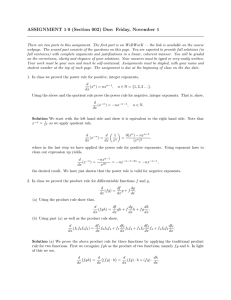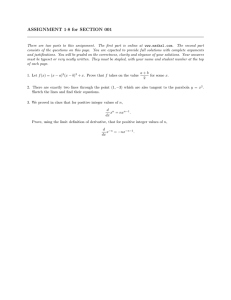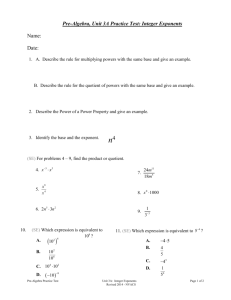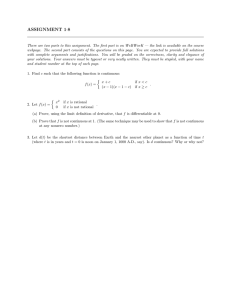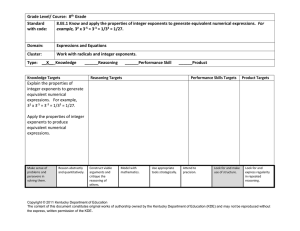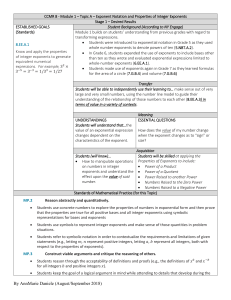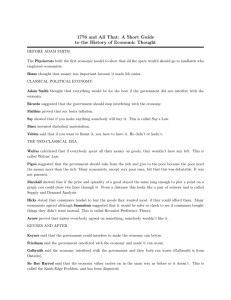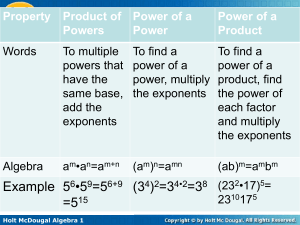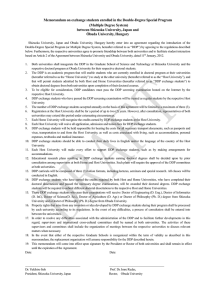ASSIGNMENT 1·9 (Section 002) Due: Friday, November 1
advertisement
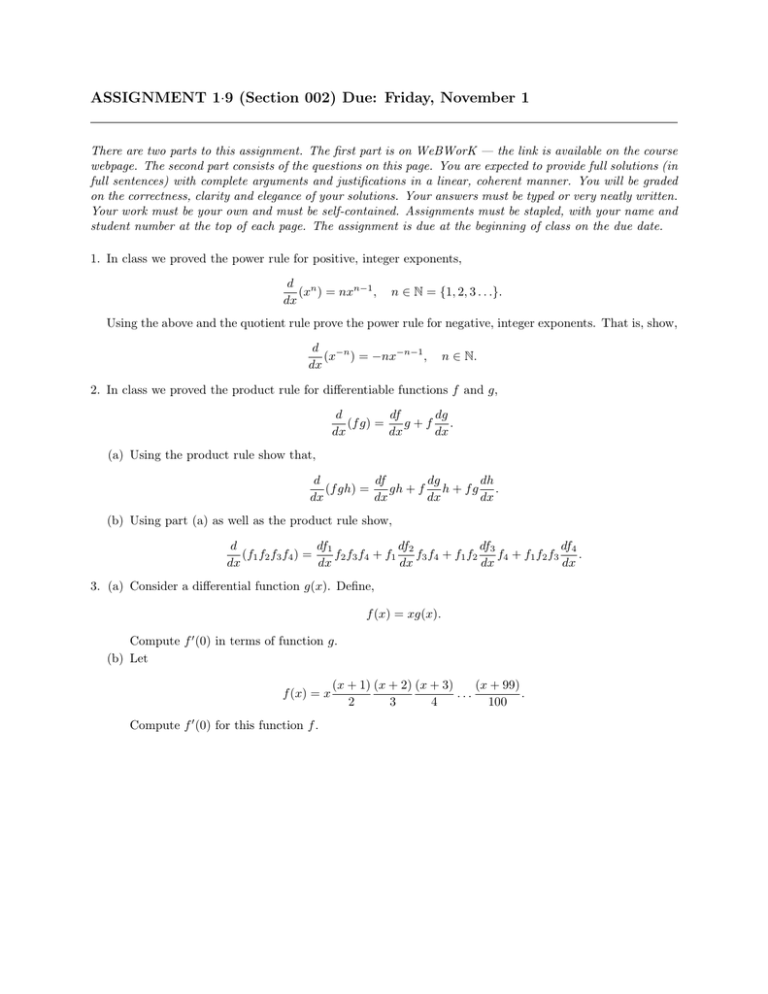
ASSIGNMENT 1·9 (Section 002) Due: Friday, November 1
There are two parts to this assignment. The first part is on WeBWorK — the link is available on the course
webpage. The second part consists of the questions on this page. You are expected to provide full solutions (in
full sentences) with complete arguments and justifications in a linear, coherent manner. You will be graded
on the correctness, clarity and elegance of your solutions. Your answers must be typed or very neatly written.
Your work must be your own and must be self-contained. Assignments must be stapled, with your name and
student number at the top of each page. The assignment is due at the beginning of class on the due date.
1. In class we proved the power rule for positive, integer exponents,
d n
(x ) = nxn−1 ,
dx
n ∈ N = {1, 2, 3 . . .}.
Using the above and the quotient rule prove the power rule for negative, integer exponents. That is, show,
d −n
(x ) = −nx−n−1 ,
dx
n ∈ N.
2. In class we proved the product rule for differentiable functions f and g,
d
df
dg
(f g) =
g+f .
dx
dx
dx
(a) Using the product rule show that,
d
df
dg
dh
(f gh) =
gh + f h + f g .
dx
dx
dx
dx
(b) Using part (a) as well as the product rule show,
df1
d
df2
df3
df4
(f1 f2 f3 f4 ) =
f2 f3 f4 + f1
f3 f4 + f1 f2
f4 + f1 f2 f3
.
dx
dx
dx
dx
dx
3. (a) Consider a differential function g(x). Define,
f (x) = xg(x).
Compute f 0 (0) in terms of function g.
(b) Let
f (x) = x
Compute f 0 (0) for this function f .
(x + 1) (x + 2) (x + 3)
(x + 99)
...
.
2
3
4
100
